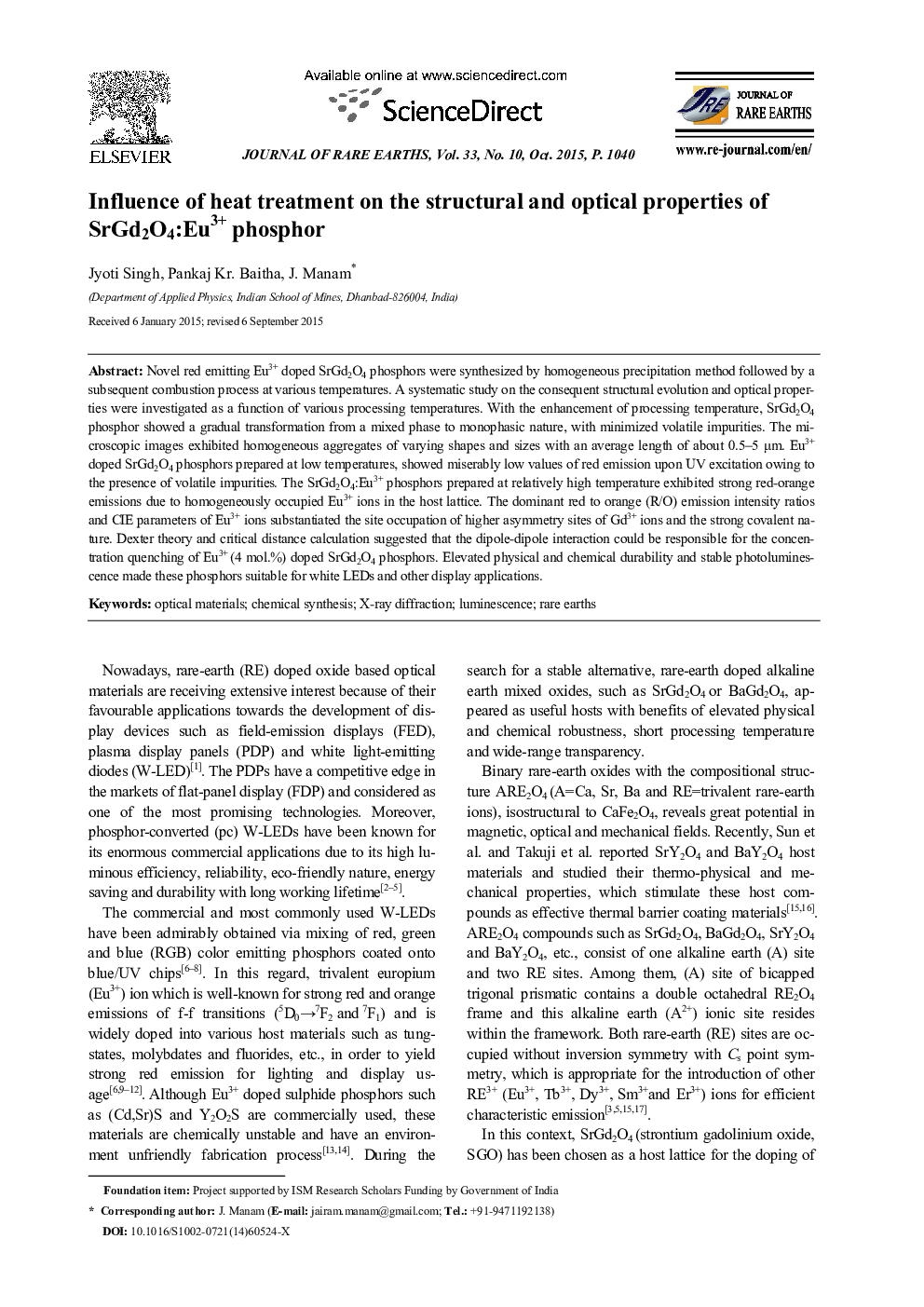| Article ID | Journal | Published Year | Pages | File Type |
|---|---|---|---|---|
| 1258389 | Journal of Rare Earths | 2015 | 11 Pages |
Novel red emitting Eu3+ doped SrGd2O4 phosphors were synthesized by homogeneous precipitation method followed by a subsequent combustion process at various temperatures. A systematic study on the consequent structural evolution and optical properties were investigated as a function of various processing temperatures. With the enhancement of processing temperature, SrGd2O4 phosphor showed a gradual transformation from a mixed phase to monophasic nature, with minimized volatile impurities. The microscopic images exhibited homogeneous aggregates of varying shapes and sizes with an average length of about 0.5–5 μm. Eu3+ doped SrGd2O4 phosphors prepared at low temperatures, showed miserably low values of red emission upon UV excitation owing to the presence of volatile impurities. The SrGd2O4:Eu3+ phosphors prepared at relatively high temperature exhibited strong red-orange emissions due to homogeneously occupied Eu3+ ions in the host lattice. The dominant red to orange (R/O) emission intensity ratios and CIE parameters of Eu3+ ions substantiated the site occupation of higher asymmetry sites of Gd3+ ions and the strong covalent nature. Dexter theory and critical distance calculation suggested that the dipole-dipole interaction could be responsible for the concentration quenching of Eu3+ (4 mol.%) doped SrGd2O4 phosphors. Elevated physical and chemical durability and stable photoluminescence made these phosphors suitable for white LEDs and other display applications.
Graphical AbstractEmission spectra of various concentrations of Eu3+ doped SrGd2O4 phosphors with excitation wavelength 264 nm. Effect of the doping concentrations on the relative photoluminescence intensity at 614 nm for various Eu3+ content doped SrGd2O4 phosphors synthesized at 1200 °C (inset). Image of SrGd2O4:Eu3+ phosphor excited with 264 nm UV light (inset)Figure optionsDownload full-size imageDownload as PowerPoint slide
